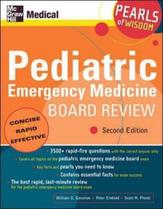 18.0%OFF
18.0%OFF

Download App
| >> | LShop | >> | Book | >> | Reference, Informati... | >> | Encyclopaedias & Ref... | >> | The F Elements |
 18.0%OFF
18.0%OFF
The f Elements
-
ISBN
:
9780195674071
-
Publisher
:
Oxford University Press India
-
Subject
:
Encyclopaedias & Reference Works
-
Binding
:
Paperback
-
Pages
:
96
-
Year
:
2005
₹
135.0
 18.0% OFF
18.0% OFF
₹
110.0
Buy Now
Shipping charges are applicable for books below Rs. 101.0
View DetailsEstimated Shipping Time : 5-7 Business Days
View Details-
Description
The book covers much of the fundamental chemistry of the lanthanide and actinide elements, including coordination chemistry, solid state compounds, organometallic chemistry, electronic spectroscopy, and magnetism. The lanthanides and actinides (the f elements) are rarely studied in detail by chemistry undergraduates. More often they appear as an afterthought in bonding, spectroscopy, magnetism, coordination chemistry, and organometallics courses. This is largely because of a lack of an accessible text treating the chemistry of these elements in one cover. Moreover, the placement of lanthanides and actinides in the closing pages of standard inorganic chemistry text books serves tomarginalise these elements further. The f elements has therefore been written to fill a gap in the undergraduate chemistry textbook market. It covers much of the fundamental chemistry of the lanthanide and actinide elements, including coordination chemistry, solid state compounds, organometallic chemistry, electronic spectroscopy, and magnetism. Many comparisons are made between the chemistry of the lanthanides and actinides and that of the transition elements, which is generally much more familiar to undergraduate chemistry students. The book uses the chemistry of the f elements as a vehicle for the communication of several important chemical concepts that are not usually discussed in detail in undergraduate courses, for example the chemical consequences of relativity and the lanthanide and actinide contractions. Many important modern applications of f element chemistry, e.g. the use of actinides in nuclear power generation and of the lanthanides in magnetic resonance imaging and catalytic converters in motor vehicle exhausts, are also discussed in depth. Key Features Provides complete coverage of the f elements Communicates several important chemical concepts that are not usually discussed in detail in undergraduate courses Describes and explains the chemistry behind many important modern application of the f elements, e.g. nuclear power generation, magnetic resonance imaging, and catalytic converters Structured according to chemical principles rather than simply listing the properties of individual elements About The Author Nikolas Kaltsoyannis Department of, Chemistry, University of Warwick Peter Scott Department of Chemistry, University of Warwick Table Of Contents Definitions and origins Properties of the atoms and ions Relativity, electronic spectroscopy, and magnetism Solid state compounds 5 Coordination chemistry Organometallics Suggested further reading Index
Related Items
-
of












 110.0
110.0






 1022.0
1022.0







